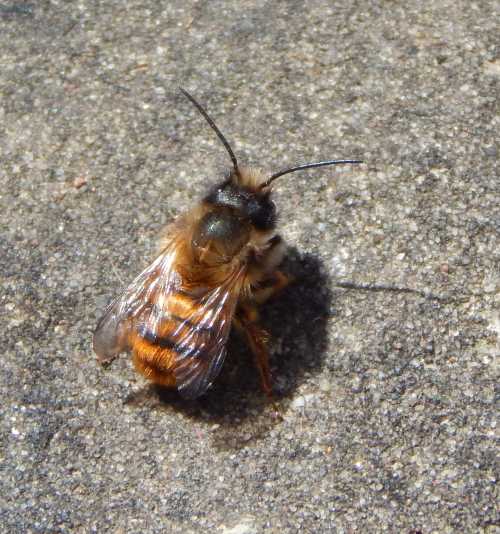Solitary Bees
Updated: 23rd February 2021
Solitary bees comprise the majority of bees, yet they are unsung heroes of our pollinator world, generally having a far lower profile than either honey or bumble bees.
Yet they are outstanding pollinators, and only during recent years, are they beginning to get the recognition they deserve.
Many species can easily be mistaken for wasps, hover flies, or even honey bees.
The largest bee in the world is believed to be a Solitary bee – Megachile Pluto, a type of leafcutter bee. However, some are very tiny at just a few millimetres long and at first glance may appear to be merely little black flies! Meanwhile, there are flies that look rather like bees, such as the Bee Fly.
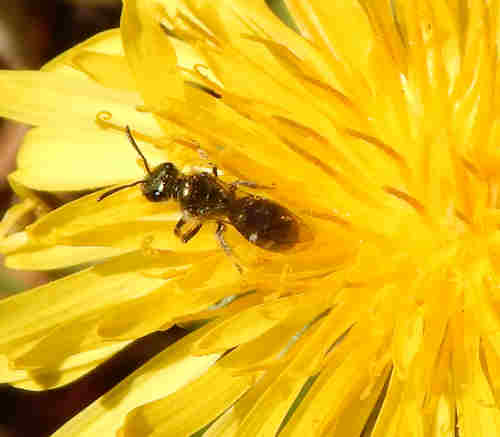 Smeathman’s furrow bee.
Smeathman’s furrow bee.
Where Do Solitary Bees Live? Nesting Habits And Behaviours
Unlike honey bees, where nest building and maintaining, as well as rearing of young is a task shared by the whole colony, this is not the case with most species of solitary bee.
Nests may be solitary, or they can occur in aggregations. There may be different elements of co-operation between females in creating nests and even providing for offspring.
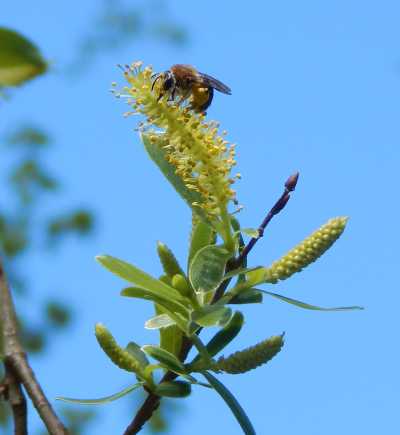 Orange-tailed mining bee feeding on willow catkin.
Orange-tailed mining bee feeding on willow catkin.Solitary nests
With some species, a nest is built by a single female, and with no other nests nearby.
Aggregations
Despite
their name, some species do live in a type of social group, with bees
building separate nests close to each other and giving the appearance of a sort
of colony.
Communal
Some species may even live communally, in that a nest entrance is shared. However, female bees build individual nest cells for laying their eggs.
Semi-social
Some, for example, species of sweat bees found in the USA and Canada (Lasioglossum) may use the same nest, and also co-operate to provide for the offspring.
Providing A Home For Solitary Bees
For species which nest in wood and in crevices, it is possible to purchase some very nice, ready-made, sturdy insect and mason bee houses. Alternatively, you could make one - a simple bundle of hollow canes and twigs securely bundled together should do the trick.
Installing a bee house such as this will enable you to observe the bees at quite close quarters, whilst also benefitting from the pollination services they provide.
You could also take a look at mine - it has been very successful, and by clicking on the link below, you can watch them entering and leaving, as well as mating.
If you are going to purchase one (they make nice, attractive gifts too), ensure it is of durable quality, and won't blow around in the wind. You also need to ensure the tubes are closed off at one end, and are the correct diameter.
Alternatively, you could make your own with hollow canes.
Stings From Solitary Bees
Note that these types of bees rarely sting, and are actually rather docile. Only females have the ability to sting, whereas males are unable to do so. However, males of some of these species can appear to be quite defensive – carpenter bee males, for example, can be rather attracted to humans who are wafting their arms around! Despite this, the bee is unable to sting and poses no threat!
Here is information about some of the most common solitary bee species:
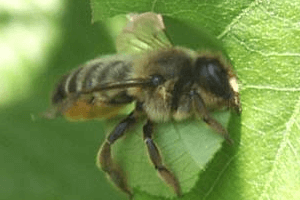
Leafcutter Bees
As their name suggests, these bees are able to cut pieces of leaf (or sometimes flower petals). They use this to build the cells in their nests.
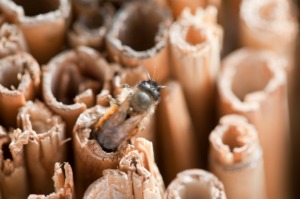
Mason Bees
Mason bees, such as the Orchard Mason bee, are increasingly used in commercial pollination. Mason bees gather mud with which to build their nests.
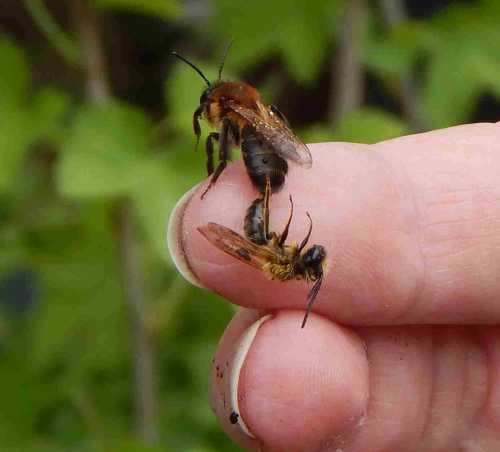
Chocolate Mining Bee
Includes lovely pictures of a male and female mining bee, mating.
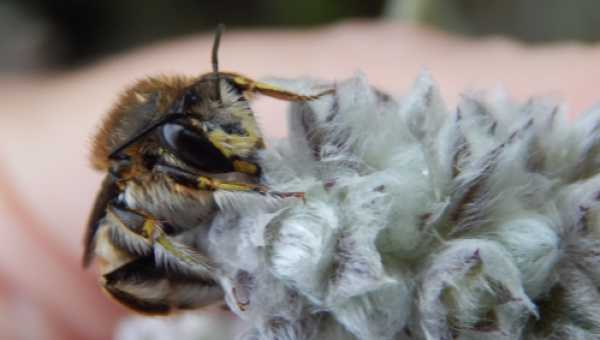
The Wool Carder Bee
This amazing bee collects hairs from plants for its nest cells.
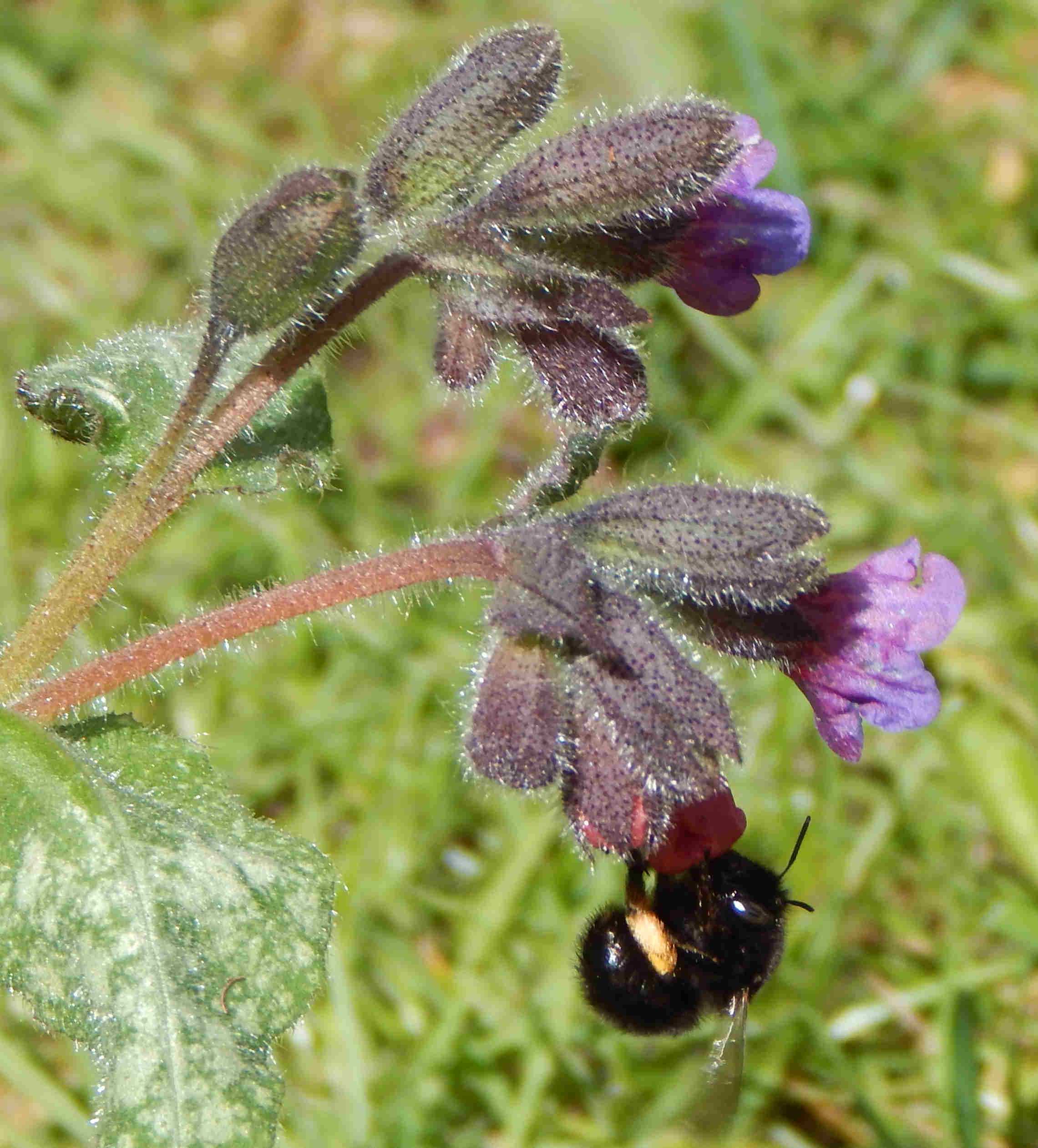
The Hairy-Footed Flower Bee
I call it 'the hobbit of the bee world'!
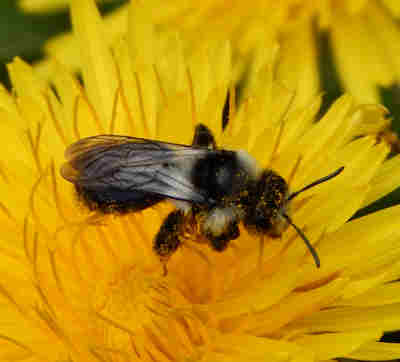
Ashy Mining Bee
A real beauty! Read about its habitat and foraging preferences here
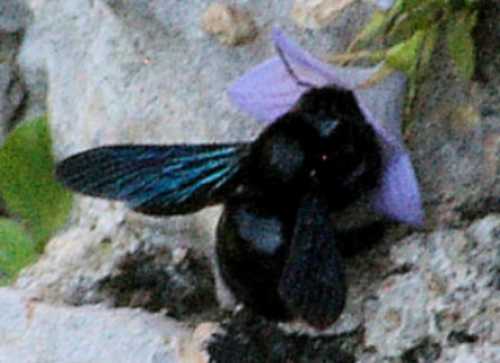
Carpenter Bees
This group of bees, not surprisingly, make their nests in wood - usually rotten and unpainted soft woods. Some types can be mistaken for
bumblebees.
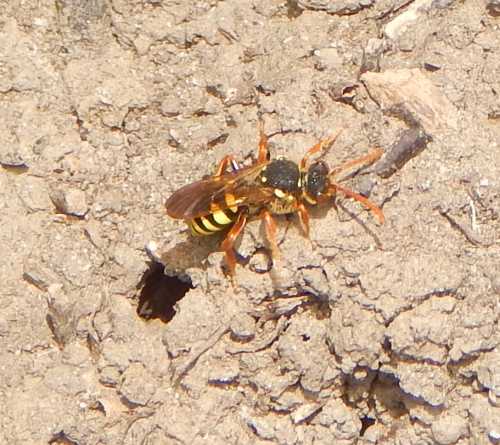
Nomad Bee
This bee is very easily mistaken for a wasp.
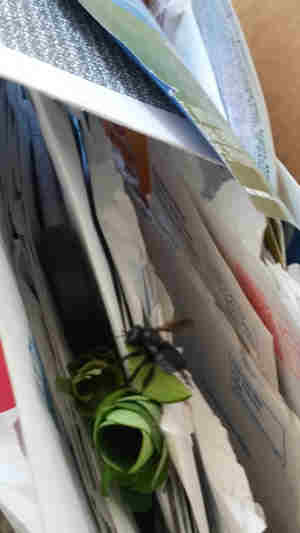
Carpenter-mimic Leafcutter Bee
Otherwise known as Megachile xylocopoides
Watch these videos of this interesting little bee in action.
If you found this page helpful or interesting, I'd really be grateful if you would share it with others - if not this page, perhaps another, such as Gardening For Bees.
Thank you so much :) .
